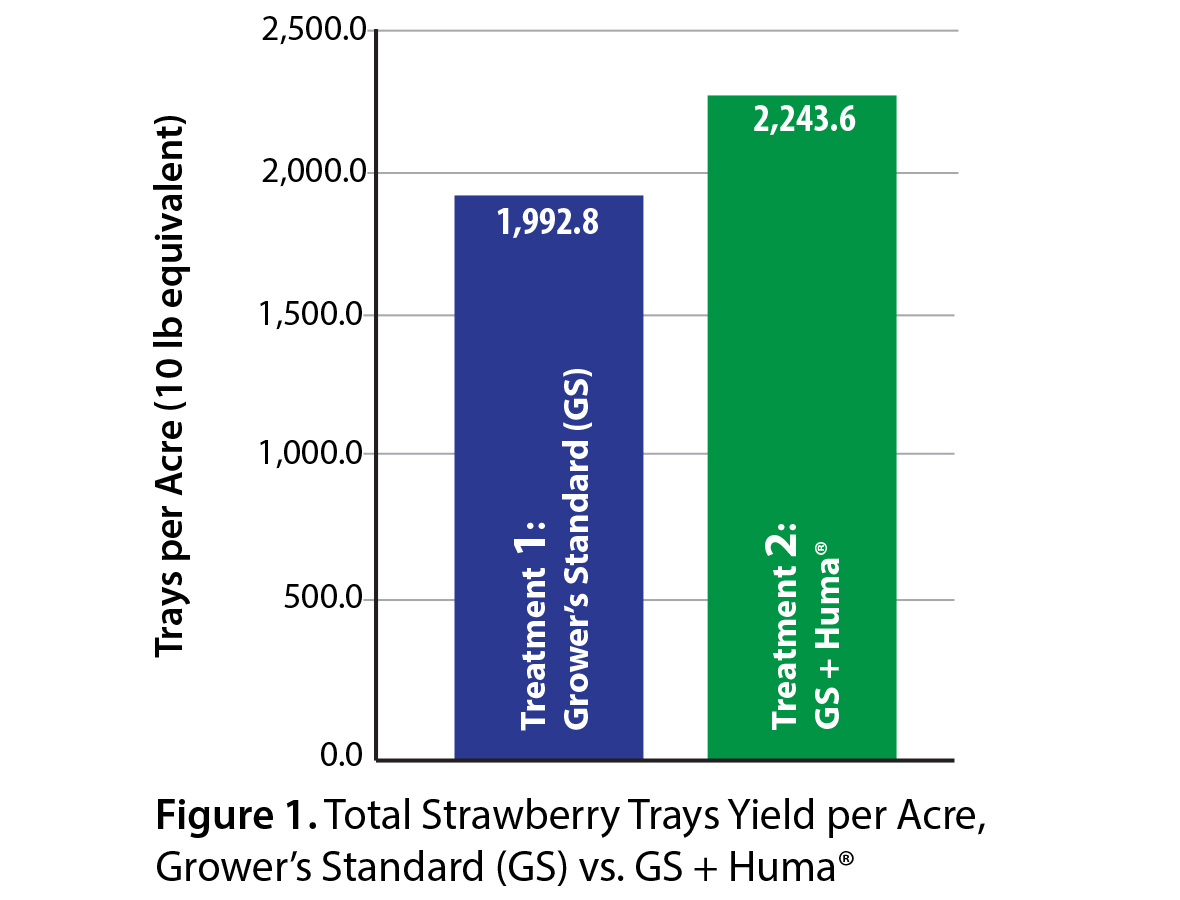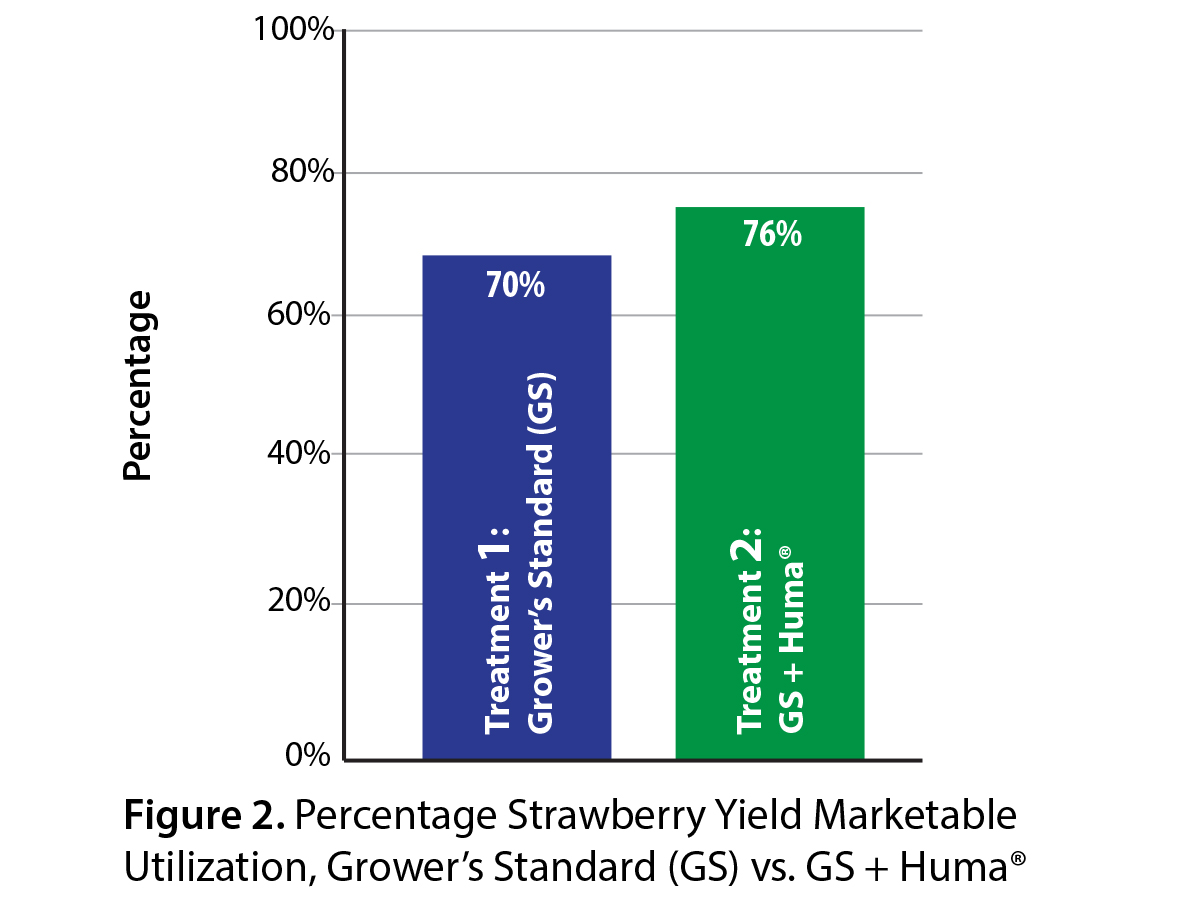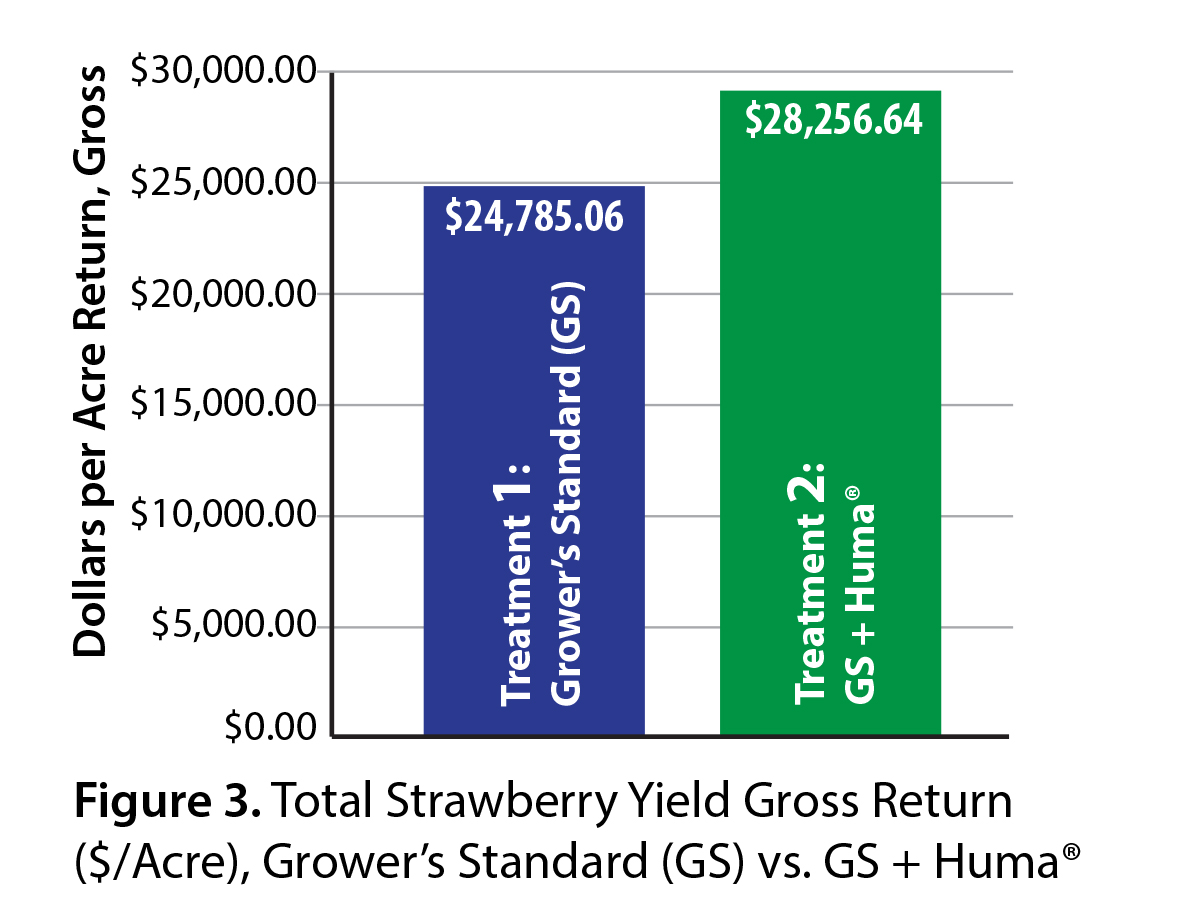Objective
This field trial assessed the effects of an additional 4 foliar applications of Huma® products on the yield of Portola strawberries when compared with the grower's standard crop nutrition program.
Materials & Methods
This trial was set up in a complete randomized-block design conducted during the growing season of July 18 through November 28 in Ventura County, Calif. Two treatment programs were compared: Treatment 1 was the grower's standard nutrition program of controlledrelease fertilizer applied at planting and in-season applications of N-P-K; Treatment 2 was the grower's standard plus varied combinations of Huma® products applied foliarly at 4 points during the growing season:
- Sept 5: 1 pint/acre each of Vitol®, Breakout®, Super Phos®
B. Sept 26: 1 pint/acre each of Vitol®, Super Phos®, Super Nitro®
C. Oct 17: 1 pint/acre each of Vitol®, Super Nitro®, Calcium
D. Nov 7: 1 pint each of Vitol®, Calcium, Super Potassium®
The strawberries were picked 16 times during the growing season, and measurements were made at each picking and results calculated cumulatively of trays picked per acre, marketable utilization of berries, yield (by weight), and price paid per yield.
Results
As can be seen in Figure 1, Treatment 2 (Huma®) produced the most trays of picked strawberries (10 lb equivalent), with a cumulative total of 2,243.6 trays per acre equivalent, compared with Treatment 1 (Grower's Standard) of 1992.8 trays per acre, a 13% yield increase for Huma®.
Figure 2 shows the daily market utilization for the berries picked during the season (the percentage of marketable berries from the total weight of berries picked), with Treatment 2 (Huma®) resulting in 76% utilization and Treatment 1 (Grower's Standard) reaching only 70%. This represents over 3,000 additional pounds of berries per acre that can be sold due to Treatment 2 (Huma®).
No problems with phytotoxicity (leaf burn) were noted with the use of any of the foliar-applied Huma® products.

Figure 1. Total Strawberry Trays Yield per Acre, Grower's Standard (GS) vs. GS + Huma®

Figure 2. Percentage Strawberry Yield Marketable Utilization, Grower's Standard (GS) vs. GS + Huma®

Figure 3. Total Strawberry Yield Gross Return
($/Acre), Grower's Standard (GS) vs. GS + Huma®
Conclusions
Based on the data collected in this trial, the Huma® treatment program resulted in both higher yields and a higher percentage of marketable yield, resulting in an overall yield increase of 13% over the Grower Standard. This yield increase resulted in a return-to-the-farm increase of almost $3,500 more per acre, a 14% increase in dollars back to the farm (see Figure 3). Factoring in the cost of the additional Huma® products applied to achieve this yield increase, the return on investment (ROI) was calculated to be 8,226%.
It is recommended that in future trials the Huma® product combinations be foliarly applied at 2-week intervals and alternate Vitol® and Breakout® in the product mixes.

